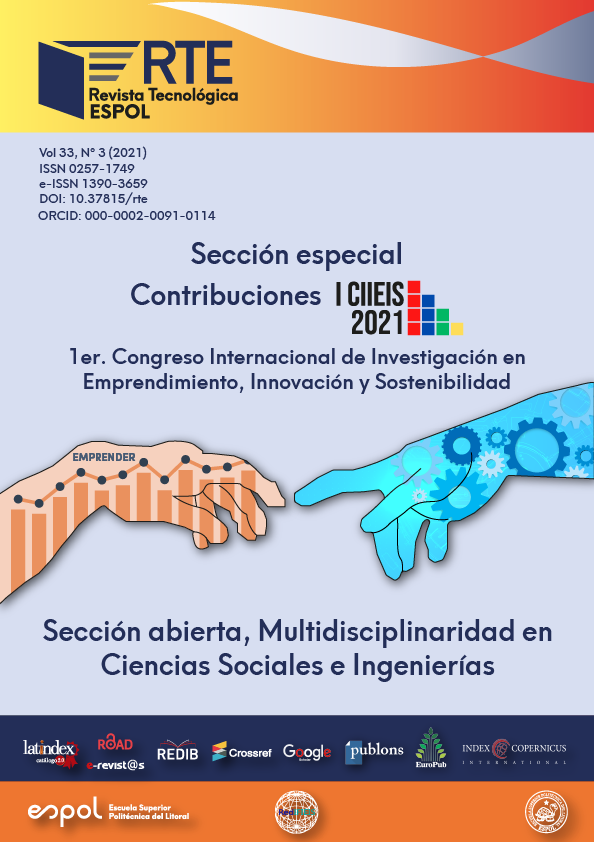Bioeconomy is positioning itself as a viable option for sustainable management of natural resources in Ecuador. Most of the alternatives promoted by the State and other organizations require considering the role of women as primary users of the forest. To analyse the relationship women-forest, the case of the Caesalpinia spinosa (Molina) Kuntze known as “vainillo”, a native species of the Andes with great potential in the textile and food industries, was studied. To learn about the socioeconomic characteristics of vainillo collectors, a survey was applied to 125 families in the province of Loja. According to the results, most of the people involved in this activity are women and older people. Harvesting takes place between May and November, a period that coincides with the dry season and is characterized by male migration. This activity generates an average of US$100 per year, which complements income from agriculture. Ninety-five percent of harvesters depend on natural forests, so care and access to this resource are essential. Initiatives to promote vainillo should apply gender-focused strategies to empower women harvesters.

This work is licensed under a Creative Commons Attribution-NonCommercial 4.0 International License.
References
Agarwal B. (2010) Gender and green governance: The political economy of women's presence within and beyond community forestry. Oxford University Press, Oxford
Aguilar, A., Twardowski, T., Wohlgemuth, R. (2019) Bioeconomy for Sustainable Development. Biotechnology Journal. https://doi.org/10.1002/biot.201800638
Alkire, S., Meinzen, R., Peterman, A., Quisumbing, A. R., Seymour, G., Vaz, A. (2013) The Women’s Empowerment in Agriculture Index. OPHI Working Paper NO. 58. University of Oxford
Arora-Jonsson, S. (2014) Forty years of gender research and environmental policy: Where do we stand? Women's Studies International Forum Volume 47: 295-308
Asfaw, A., Lemenih, M., Kassa, H., Ewnetu, Z. (2013) Importance, determinants and gender dimensions of forest income in eastern highlands of Ethiopia: The case of communities around Jelo Afromontane forest. Forest Policy and Economics 28: Pages 1-7
Barriga, C. (2008). Cultivos y aprovechamiento de la vainillo Caesalpinia spinosa en la región andina (documento de trabajo). ECOBONA. Lima.
Biber-Freudenberger, L., Ergeneman, C., Förster, J. J., Dietz, T., Börner, D. (2020) Bioeconomy futures: Expectation patterns of scientists and practitioners on the sustainability of bio-based transformation. Sustainable development https://doi.org/10.1002/sd.2072
Coleman, E. A., Mwangi, E. (2013) Women's participation in forest management: A cross-country analysis. Global Environmental Change 23 (1): 193-205.
Dash, M., Behera, B., Rahut, D. B. (2016) Determinants of household collection of non-timber forest products (NTFPs) and alternative livelihood activities in Similipal Tiger Reserve, India. Forest Policy and Economics 73: 215-228
Godoy, R., Contreras M. (2001) A comparative study of education and tropical deforestation among lowland Bolivian Amerindians: forest values, environmental externality, and school subsidies. Econ. Dev. Cult. Chang., 49 (3): 555-574
INEC (2019). Instituto Nacional de Estadísticas y Censos. Obtenido de https://www.ecuadorencifras.gob.ec/institucional/home/
Hawkins, R., Ojeda, D. (2011) Gender and environment: Critical tradition and new challenges Environment and planning D, 29: 237-253
Heltberg, R., Arndt, T.C., Sekhar, N.U. (2000) Fuelwood consumption and forest degradation: a household model for domestic energy consumption in rural India. Land Econ.76 (2): 213-232
Larrea, M. (2011) La vainillo, guarango o taya (Caesalpinia spinosa) en la Región Andina: criterios ambientales para la sustentabilidad de su aprovechamiento y manejo en Bolivia, Ecuador y Perú. Ecobona, Serie de Capacitación No. 5 Programa Regional Ecobona-Intercooper, Quito, Peru.
MAE (2020). Ecuador promueve la bioeconomía como una estrategia para el Desarrollo Sostenible. Boletín N° 188, Quito.
Meier zu Selhausen, F. (2016) What determines women's participation in collective action? Evidence from a Western Ugandan coffee cooperative. Feminist Economics, 22 (1): 130-157
Naturaleza y Cultura Internacional. (2017). Vainillo: exportaron primeras 48 toneladas. Retrieved December 2, 2018, from http://www.naturalezaycultura.org/spanish/htm/news/2017-08-Vainillo.htm
Ndoye, O., Kaimowitz, D. (2000) Macro-economics, markets and the humid forests of Cameroon. J. Mod. Afr. Stud., 38 (2): 225-253
Osec (2012). Market Brief for Tara Gum. Swiss Import Promotion Programme. Disponible en http://www.biotrade.org/congress/BackgroundDocs2/General%20docs/Peru/Peru_Market-Brief-Tara-gum_SIPPO.pdf
Ramdas, S. R. (2009) Women, forest spaces and the law: Transgressing the boundaries Economic and Political Weekly 44: 65-73
Romero, I. (2019). Producción y Comercio de la Tara en Perú. Ministerio de Agricultura y Riego, Dirección General de Políticas Agrarias. Lima: Dirección de Estudios Económicos e Información Agraria. Obtenido de http://www.siicex.gob.pe/siicex/documentosportal/alertas/documento/doc/168510289radF57F7.pdf
Sell, M., Minot, N. (2018) What factors explain women's empowerment? Decision-making among small-scale farmers in Uganda. Women's Studies International Forum 71: 46-55
Shangay-Tucto, S., Dubonnois, (2018) Ecological characteristics of vainillo (Caesalpinia spinosa), a multipurpose legume tree of high ecological and commercial value. In: Agricultural Research Updates. Volume 22. Editors: P. Gorawala et al. Nova Science Publishers, Inc.







